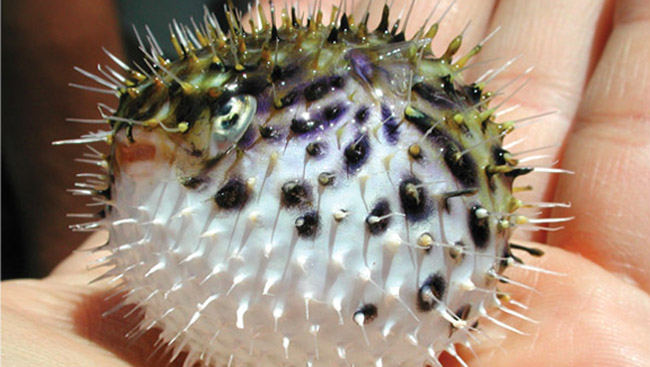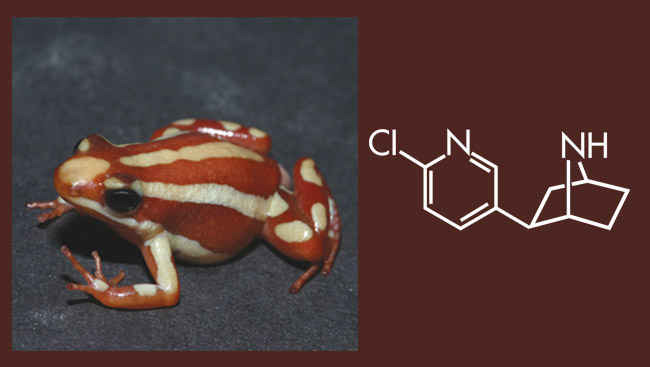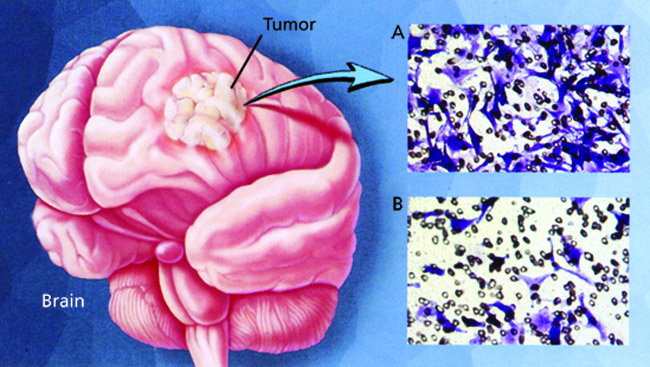Toxins and Venoms
- Published4 Jan 2009
- Reviewed20 Aug 2013
- Author Debra Speert, PhD
- Source BrainFacts/SfN
Researchers studying the natural world have made startling discoveries that impact both science and medicine. Simple curiosity about the sting of a scorpion or the toxicity of food poisoning has yielded unexpected results — novel research tools and drug targets. These surprising sources are resulting in new treatment opportunities for brain cancer and neurological disorders.
Research on the toxins that make people sick has yielded surprising results. No one could have predicted that a simple case of food poisoning would revolutionize neuroscience.
A Fish Tale
In the early 1770s, British explorer Captain James Cook made history navigating the South Pacific. Although his travel logs primarily recorded journeys to new lands, they also documented important medical history. On September 7, 1774, Captain Cook and two of his crew took a taste of an exotic fish and fed the rest to their pets. The men awoke a few hours later feeling weak, dizzy, numb, and short of breath — and their pets were dead. From Cook’s description of his symptoms and his shipmate’s drawings of the fish, historians concur that Cook consumed a bite of the poisonous puffer fish.
What was it about the puffer fish that made Cook so sick? In the early 1900s, Japanese researchers isolated the puffer fish toxin, tetrodotoxin (TTX). During the next 60 years, they and others figured out that TTX prevents nerve cells from generating electrical signals. By blocking nerve cell communication, TTX causes muscle paralysis, which, when it affects breathing, results in death. Captain Cook was lucky to have taken just a taste.
Putting a Killer to Use
It turns out that TTX binds to and blocks nerve cell pores called ion channels, which normally allow sodium ions to pass through. Sodium ion influx is vital to nerve cell communication; without it, communication between cells ceases. However, other electrically charged molecules, like potassium and calcium, are also important for brain cell communication. Like TTX, many toxins in the natural world block the channels for these and other charged particles. Venoms from snakes, bees, scorpions, wasps, and some plants all affect these structures.
Today, researchers around the world use TTX and other toxins to study the electrical properties of nerve cells. With the help of these toxins, researchers now know intricate details about how nerve cells communicate. From research on natural chemicals, researchers have isolated important tools for scientific discovery.
A treasure trove of potential drugs
Knowing that animals like puffer fish make drugs that are as potent as those designed synthetically, researchers searched for new compounds in the animal kingdom.
Feeling No Pain
Intrigued by reports that some native people poisoned arrowheads with chemicals produced by frogs, a pharmacologist at the National Institutes of Health traveled to South America to collect samples. Back in his lab, he found that mice injected with a frog extract reacted as if they had been treated with powerful pain relievers — they arched their tails over their backs.
Years later, the researcher isolated the pain-relieving compound in the frog skin. The chemical acts on molecules that communicate messages from the central nervous system to muscles. This research suggested new treatment targets for pain research, and drug companies are taking notice.
Big Promise in a Little Snail
Other researchers identified hundreds of new, medically relevant chemicals in the venom of marine cone snails. These tiny animals attack their prey with a stinger that acts both as a harpoon and a hypodermic needle, injecting their fish dinners with a venomous cocktail of more than 100 different chemicals.
One researcher separated the cone snail venom into its chemical components and tested each in mice. Some of the venom chemicals sedated the mice, some reduced pain, and others caused paralysis. Unlike synthetic drugs that have unintended side effects because they act at a variety of biological addresses, some of the vemon chemicals targeted very specific sites in the body and brain, making them attractive candidates for drug discovery.
One cone snail chemical is now being used to treat chronic pain in humans. Others are being developed to treat epilepsy. Each of the 500 cone snail species has its own mix of unique chemicals, suggesting the presence of tens of thousands of chemicals in cone snails alone that might impact human health and disease.
Human treatments from unlikely sources
Having identified an incredible array of chemicals in naturally occurring toxins and venoms, researchers are now turning to these surprising sources for new treatment opportunities.
Targeting Brain Cancer
Each year, approximately 18,000 Americans are diagnosed with gliomas, the most common type of brain tumor; many die within 12 months. Glioma tumors are particularly damaging because they tend to quickly sprout and spread within the brain.
To spread into tight spaces in the brain, glioma cells use special chloride channels that are not found in other healthy brain cells. Researchers found a chemical in yellow Israeli scorpion venom called chlorotoxin that targets these chloride channels, leaving healthy brain cells alone.
In recent clinical trials, a synthetic form of chlorotoxin reduced glioma tumor expansion. Furthermore, when researchers attached a poison to chlorotoxin, they found they could kill glioma tumor cells without affecting healthy ones.
Botulinum Toxin: Treating Wrinkles and Neurological Disease
Botulinum toxin is another natural chemical used clinically. It is produced by bacteria and causes muscle paralysis by blocking cellular communication. In the late 1980s, doctors used botulinum toxin to treat patients suffering from eye muscle disorders. Some noticed that their patients had fewer wrinkles as their conditions improved, and now botulinum toxin is a common cosmetic tool. However, physicians also use it to help people suffering from the painful muscle spasms of the neurological disorder dystonia. Now researchers are devising new treatment uses for the paralytic toxin; recent studies test its ability to relieve migraine headaches and ease stroke recovery.
From new uses of known toxins to the discovery of novel drugs in poisonous venom, curiosity-driven research is paying off, yielding new treatments for chronic pain, epilepsy, and brain tumors. Although the medical relevance was not clear at the outset, support for this basic science research is an investment in the scientific discoveries and medical treatments of the future.
CONTENT PROVIDED BY
BrainFacts/SfN
Also In Archives
Trending
Popular articles on BrainFacts.org






















